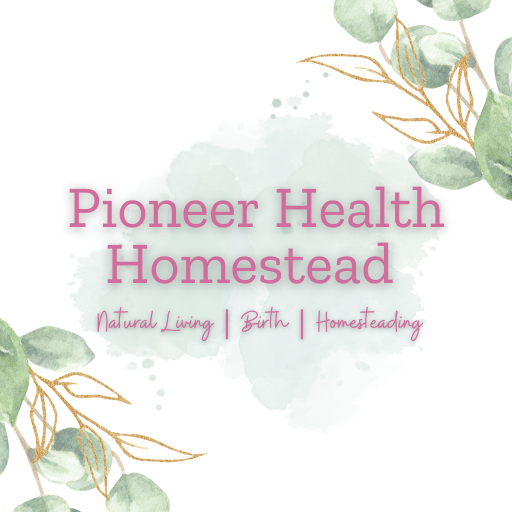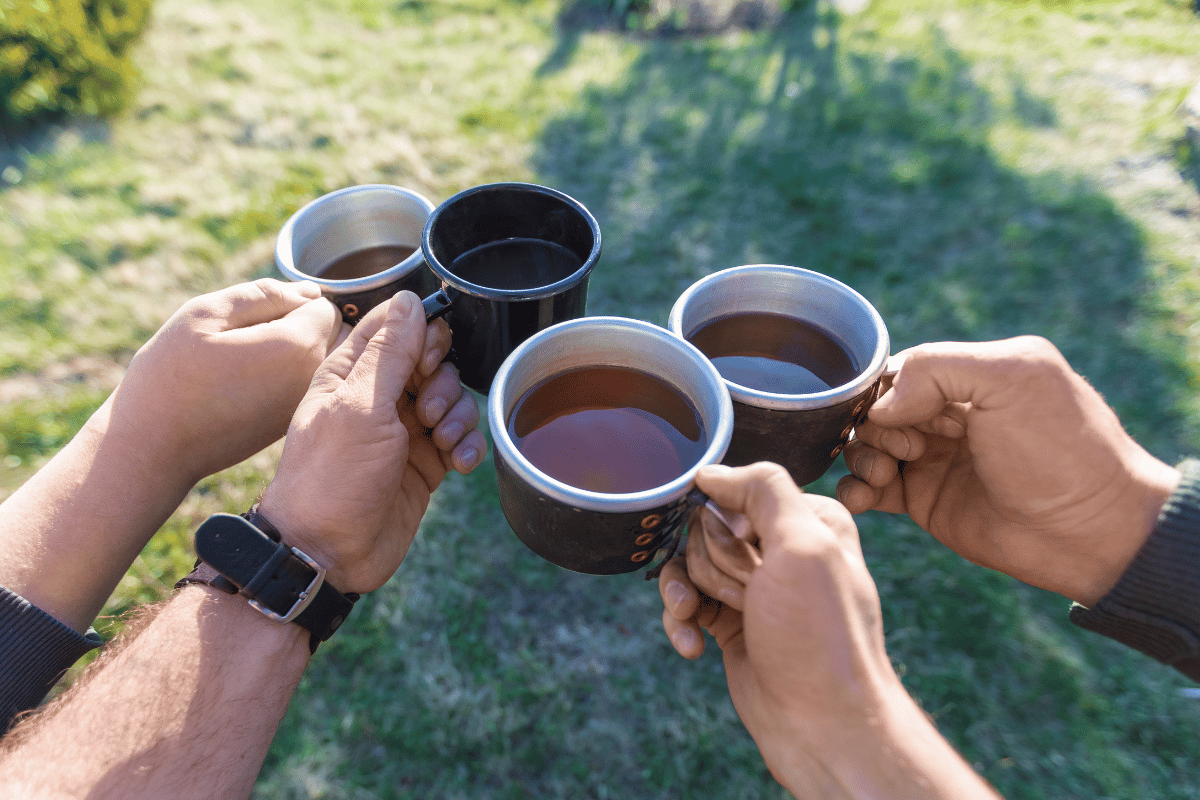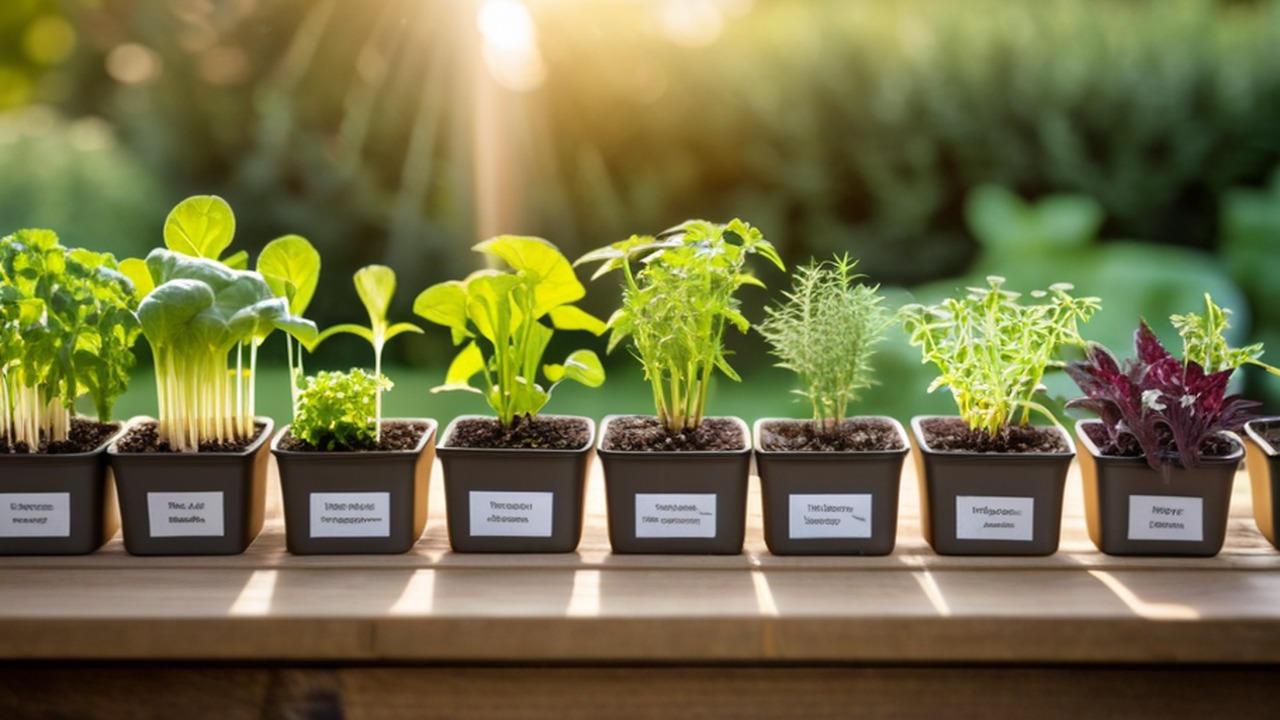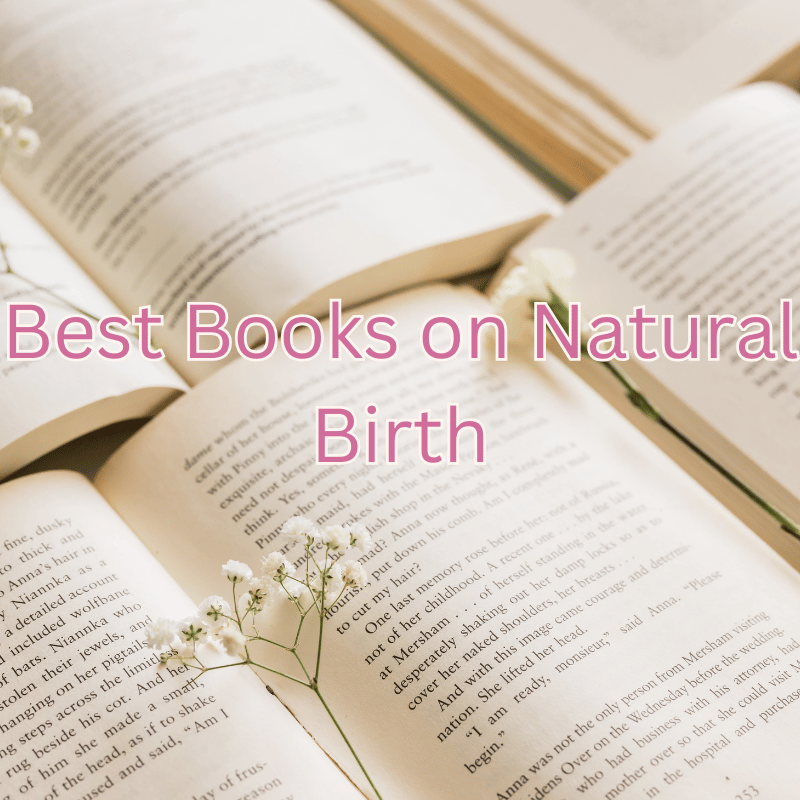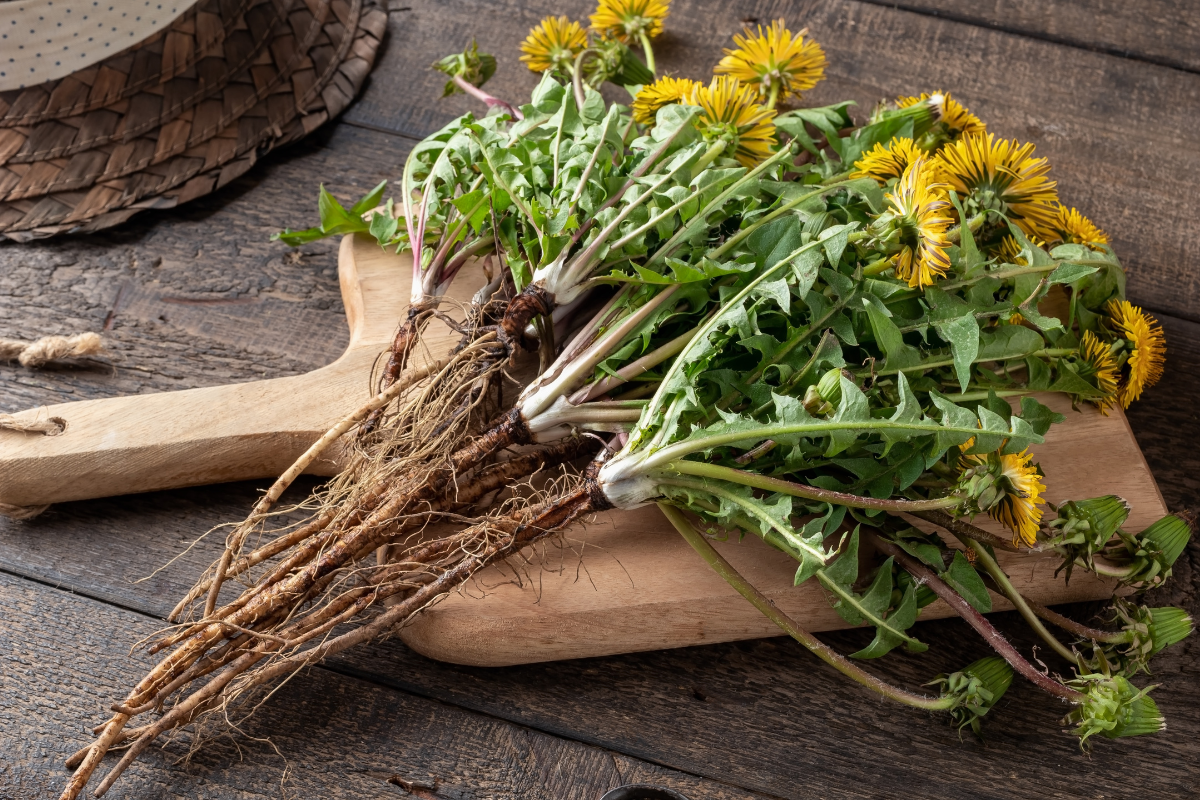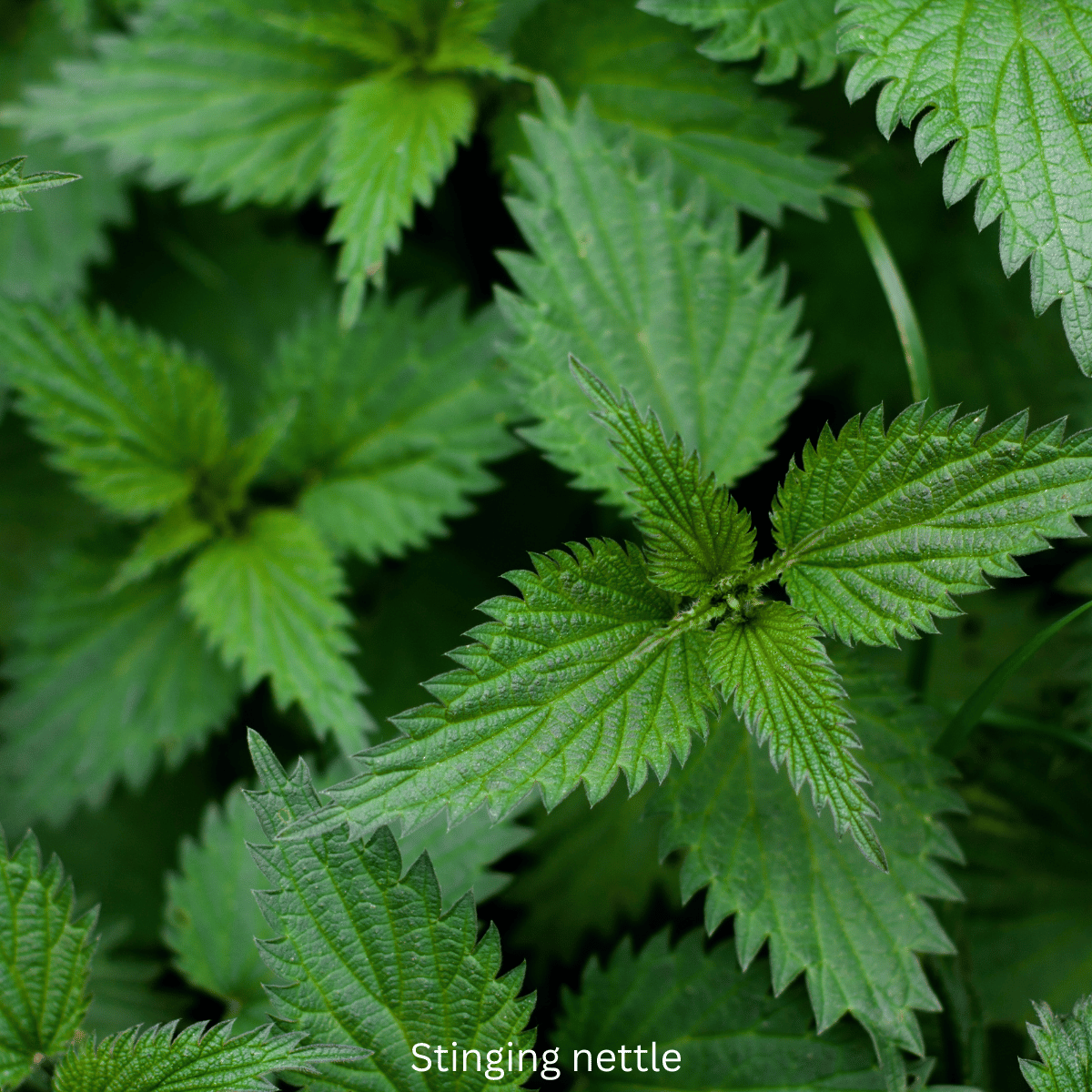How to Build Your Home Herbal Medicine Cabinet from an RN
In this post, I will teach you how to start building your own home herbal medicine cabinet. As an RN and mother of 5, I am familiar with common ailments and concerns most families have today. This post discusses the topics of herbal medicine and explores its numerous benefits. Herbal medicine, also known as botanical medicine or phytotherapy, is the use of plants and plant extracts to promote health and treat illness. It’s a practice that has been around for centuries and is rooted in the science of nature providing us with powerful remedies for a variety of health concerns.
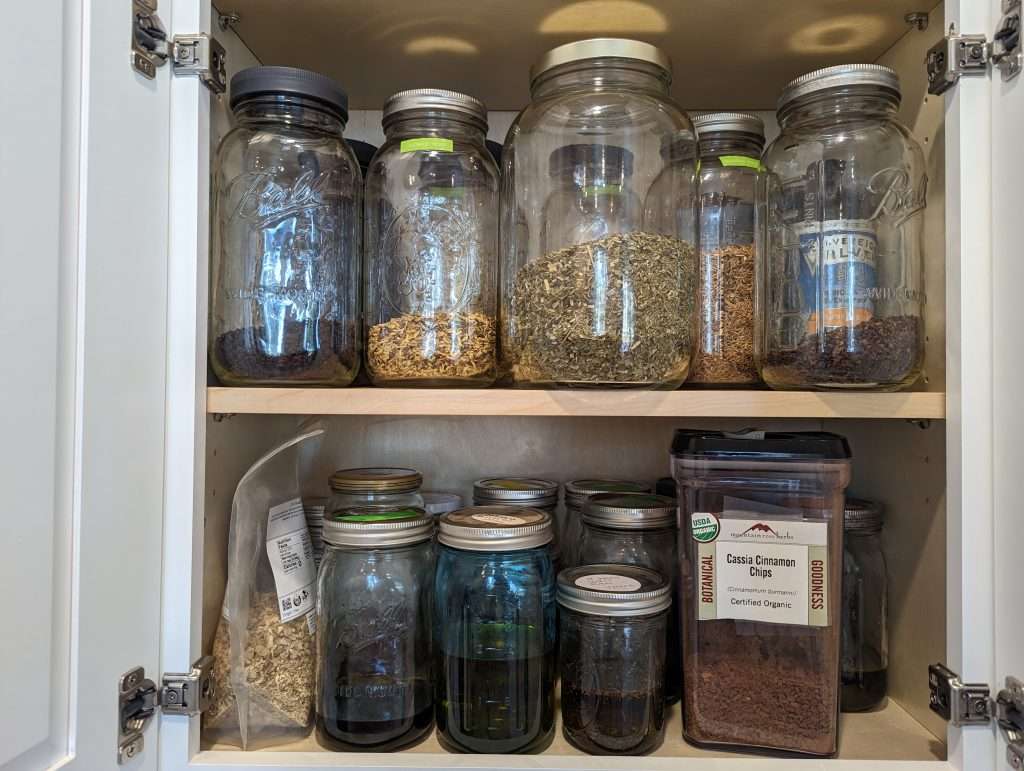
Whether you’re new to herbal medicine or have already been utilizing herbs, having a well-stocked herbal medicine cabinet can be a valuable asset for supporting your health and wellness naturally.
The purpose of this blog post is to provide you with a step-by-step guide on how to build your own home herbal medicine cabinet. We’ll cover everything from selecting the right herbs for your needs to storing them properly to ensure their potency and effectiveness. By the end of this post, you’ll have all the information you need to create your natural medicine cabinet and take control of your health holistically and sustainably.
At the end of this post, there is a recipe for the most common herbal remedy: elderberry syrup. This is my tried and true recipe that I sell in my online shop.
So, let’s start this exciting journey towards building your own home herbal medicine cabinet!
Benefits of Medicinal Herbs & Natural Remedies
Herbal medicine offers a lot of benefits that make it a popular choice for those seeking natural and holistic approaches to health and wellness. One of the key advantages of herbal medicine is its reliance on natural ingredients. Unlike many pharmaceutical drugs, which are often synthesized in a laboratory, herbal remedies are derived from plants and plant extracts. This means that they are often considered more natural and less processed, making them a preferred option for those seeking a more holistic approach to health.
Another major benefit of herbal medicine is its potential for fewer side effects. Many pharmaceutical drugs come with a long list of potential side effects, some of which can be quite severe. In contrast, herbal remedies are generally associated with fewer side effects, as they often contain fewer active ingredients and are less likely to cause adverse reactions. However, it’s important to note that herbal remedies can still have side effects, especially if used improperly. It’s always best to consult with a healthcare professional before starting any new herbal remedy, especially if you have a pre-existing medical condition or are taking other medications.
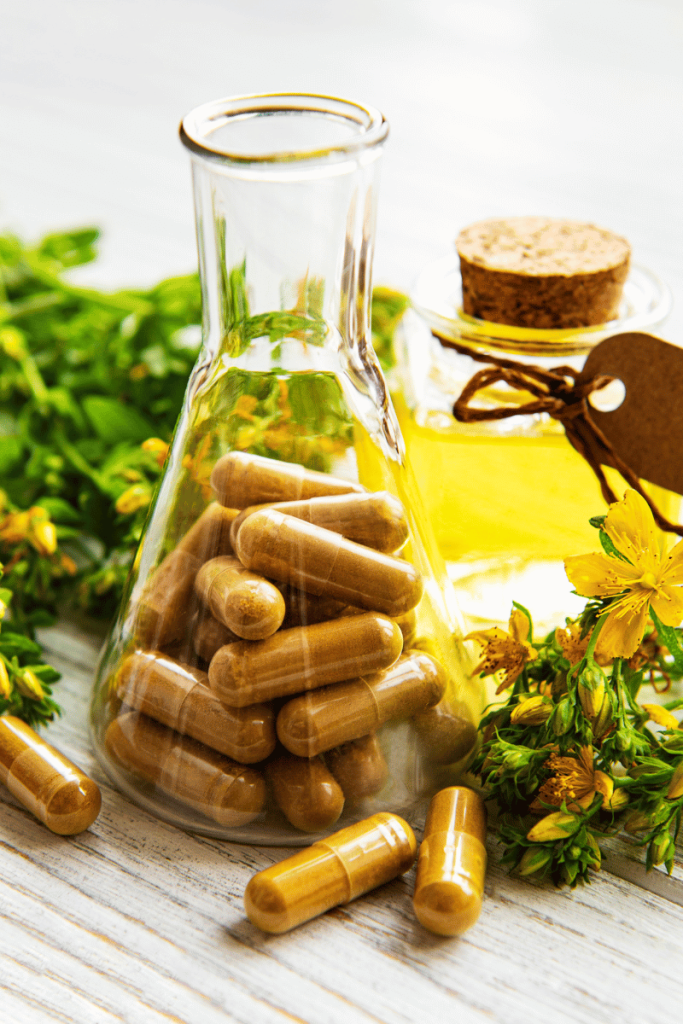
Also, cost-effectiveness is another advantage of herbal medicine. Many herbs are readily available and can be grown at home, reducing the need for expensive medications. Additionally, herbal remedies are often more affordable than pharmaceutical drugs, making them a cost-effective option for those on a budget.
Now, let’s take a look at some common herbs and their uses:
Chamomile
Chamomile is often used for relaxation and stress relief. It can also help with sleep and digestion. This can be taken in tea or used as an essential oil.
Ginger
Ginger is known for its anti-inflammatory properties and is often used to aid digestion and relieve nausea.
Peppermint
Peppermint is a popular herb for digestive issues, such as indigestion and bloating. It can also help with headaches and muscle aches. Using it as an essential oil or in herbal form is most popular for this herb.
Eucalyptus
Eucalyptus is commonly used to relieve congestion and coughs. It can also help with sore throats and sinus infections. Diffusing this herb as an essential oil or using it in a salve is very common.
These are just a few examples of the many herbs that can be used for a variety of health concerns. Whether you’re looking to relax, improve digestion, or relieve a sore throat, there’s likely an herbal remedy that can help. Just remember to use herbs safely and consult with a healthcare professional if you have any questions or concerns.
Selecting Herbs
Selecting the right herbs for your home herbal medicine cabinet is an important step in building a holistic and effective collection of remedies. When choosing herbs, it’s important to consider factors such as health benefits, availability, and personal preferences. Try and think of what home remedies you are going to be making.
When first starting your home herbal medicine cabinet, you’re going to first want to make a list of what ailments you’re going to want to treat. Do you have a specific chronic illness that you’re dealing with like high blood pressure? If so, you may want to consider the herbs best suited for that illness first. Or if you have children, what common sicknesses are they prone to? Generally, children will have cold and flu symptoms off and on when they’re little so selecting herbs to help support their immune systems and combat those common symptoms may be best.
Think of the health benefits of each herb. Different herbs have different properties and can be used to address a variety of health concerns. For example:
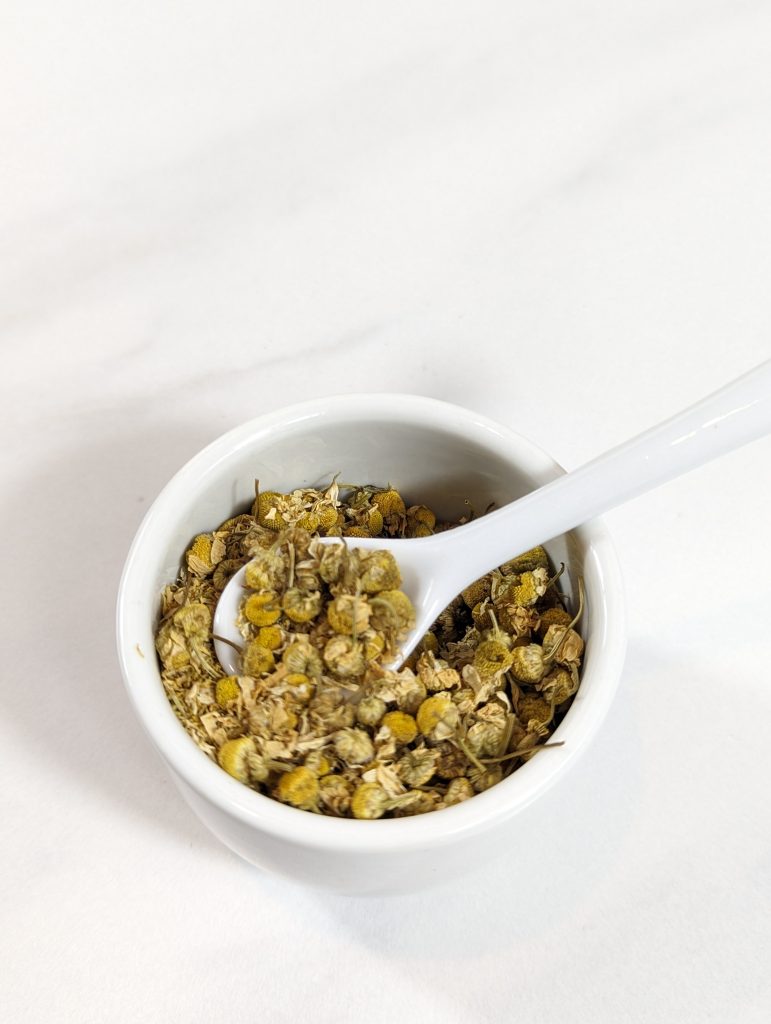
Elderberry
Elderberry is known for its immune-boosting properties and is often used to prevent and treat colds and flu season. Elderberries are rich in vitamins and minerals, including vitamin C, vitamin A, potassium, and iron. They also contain antioxidants called flavonoids, which can help protect the body from oxidative stress and inflammation. Elderberry syrup is a popular way to consume elderberries and can be made at home by simmering elderberries with water and honey.
Oregano
Oregano is a powerful antimicrobial herb that can help fight infections and boost the immune system. It contains vitamins A, C, and K, as well as minerals like calcium, magnesium, and iron. It also contains compounds called carvacrol and thymol, which have been shown to have antimicrobial and antioxidant properties. Oregano can be used fresh or dried in cooking, or it can be made into a tea or tincture for immune support.
Echinacea
Echinacea is another immune-boosting herb that can help prevent and treat colds and flu. It contains vitamins A, C, and vitamin E, as well as minerals like iron and selenium. It also contains compounds called alkylamides, which can help stimulate the immune system. Echinacea can be made into a tea or tincture for immune support, or it can be taken in capsule form.
Lavender
Lavender is a calming herb that can help with stress, anxiety, and insomnia. It contains vitamins A and C, as well as minerals like calcium and magnesium. It also contains compounds called linalool and linalyl acetate, which have been shown to have calming and sedative effects. Lavender can be used in aromatherapy, or it can be made into a tea or tincture for relaxation.
Cinnamon
Cinnamon is a warming herb that can help with digestion and blood sugar regulation. It contains vitamins A, C, and K, as well as minerals like calcium and manganese. It also contains compounds called cinnamaldehyde and eugenol, which have been shown to have anti-inflammatory and antioxidant properties. Cinnamon can be used in cooking or made into a tea for digestive support.
Calendula
Calendula is a soothing herb that can help with skin irritation and inflammation. It contains vitamins A and C, as well as minerals like calcium and magnesium. It also contains compounds called flavonoids and triterpenoids, which have been shown to have anti-inflammatory and antimicrobial properties. Calendula can be made into a salve or cream for skin irritation, or it can be made into a tea or tincture for internal use.
Ginger
Ginger is a warming herb that can help with digestion, nausea (upset stomach, morning sickness), and inflammation. It contains vitamins C and B6, as well as minerals like magnesium and potassium. It also contains compounds called gingerols and shogaols, which have been shown to have anti-inflammatory and anti-nausea properties. Ginger can be used fresh or dried in cooking, or it can be made into a tea or tincture for digestive support.
Garlic
Garlic is a potent antimicrobial herb that can help fight infections and boost the immune system. It contains vitamins C and B6, as well as minerals like selenium and manganese. It also contains compounds called allicin and alliin, which have been shown to have antimicrobial and immune-boosting properties. Garlic can be used fresh or dried in cooking, or it can be made into a tea or tincture for immune support.
Comfrey
Comfrey is a healing herb that can help with muscle aches, bruises, and wounds. It contains vitamins A, C, and B12, as well as minerals like calcium and potassium. It also contains compounds called allantoin and rosmarinic acid, which have been shown to have anti-inflammatory and wound-healing properties. Comfrey can be made into a salve or poultice for external use, or it can be made into a tea or tincture for internal use.
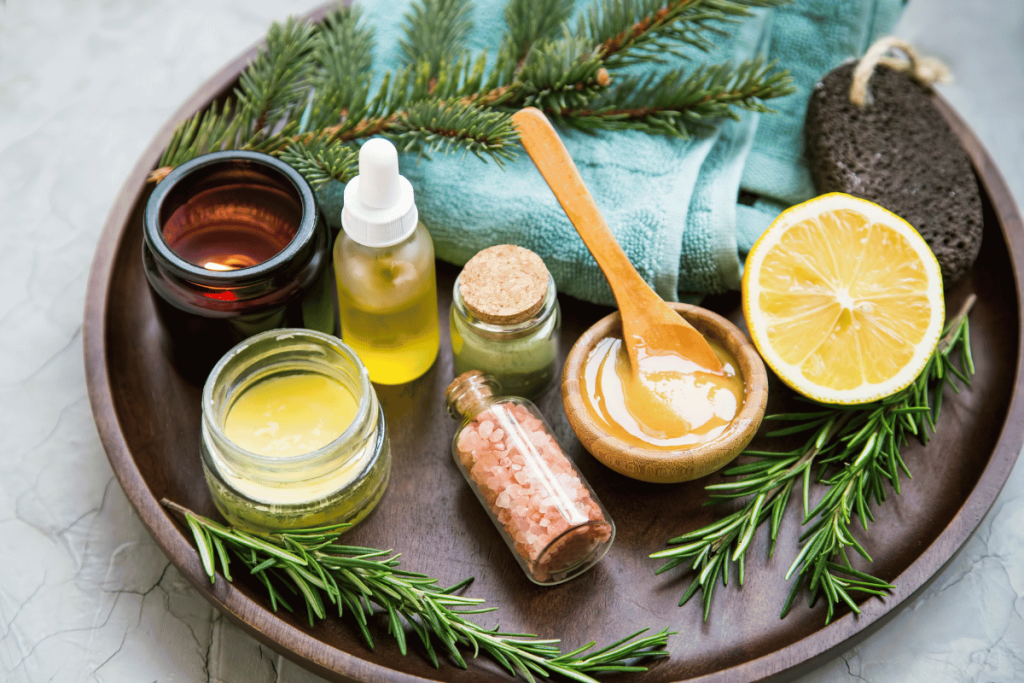
Considerations for Your Home Herbal Medicine Cabinet
Consider the availability of each herb. Some herbs are readily available at health food stores or online, while others may be more difficult to find. If you’re interested in growing your own herbs, consider which herbs are easy to grow in your climate and how much space you have available. Many herbs can be grown in pots or small gardens, making them a convenient option for those with limited space.
Consider your personal preferences. Some people prefer the taste or smell of certain herbs over others, so it’s important to choose herbs that you enjoy using. Additionally, consider any allergies or sensitivities you may have to certain herbs, and avoid those herbs if necessary.
Here’s a list of common herbs and their uses:
- Elderberry: Elderberry is often used for immune support and can be made into a syrup or tincture.
- Oregano: Oregano is a versatile herb that can be used in cooking or made into a tea for immune support.
- Echinacea: Echinacea is often used to prevent and treat colds and flu and can be made into a tea or tincture.
- Lavender: Lavender is a calming herb that can be used in aromatherapy or made into tea for relaxation.
- Cinnamon: Cinnamon is a warming herb that can be used in cooking or made into tea for digestion.
- Calendula: Calendula is a soothing herb that can be made into a salve or cream for skin irritation.
- Ginger: Ginger is a warming herb that can be made into a tea or tincture for digestion and nausea.
- Garlic: Garlic is a potent antimicrobial herb that can be used in cooking or made into a tincture for immune support.
- Comfrey: Comfrey is a healing herb that can be made into a salve or poultice for muscle aches and wounds.
These are just a few examples of the many herbs that can be used for a variety of health concerns. By considering factors such as health benefits, availability, and personal preferences, you can choose the right herbs for your own natural medicine cabinet and create a collection of remedies that will support your health and wellness naturally.
Forms of Herbs Available for Your Home Herbal Medicine Cabinet
Herbs can come in various forms, each with its unique benefits and uses. Understanding the different forms can help you choose the most suitable option for your needs:
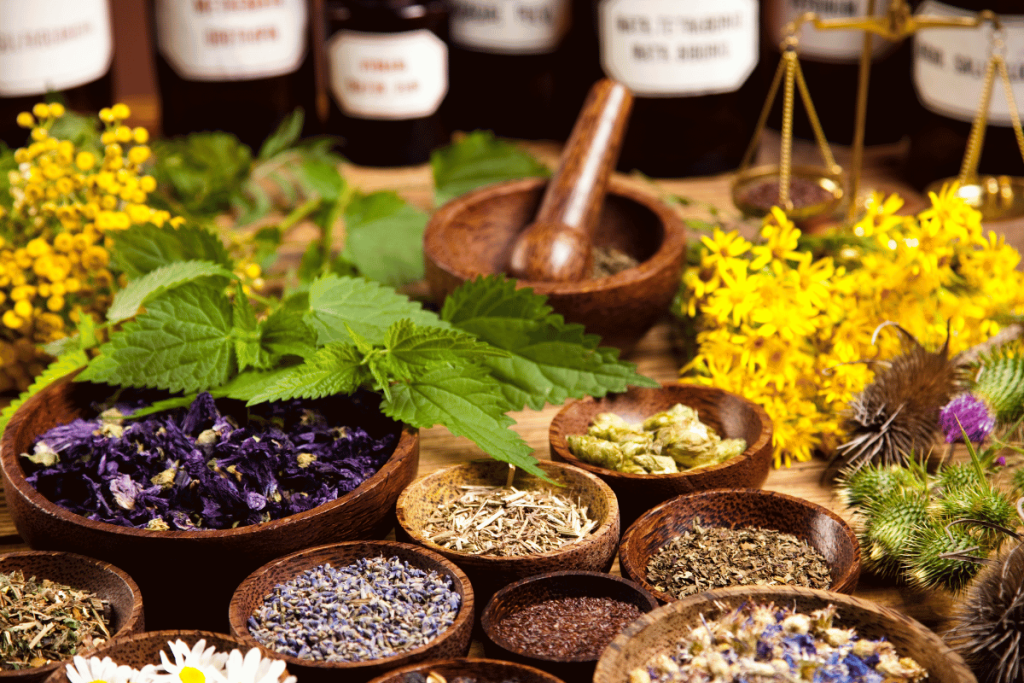
Fresh Herbs
Fresh herbs are harvested directly from the plant and are typically used in cooking or for making herbal teas. They have a vibrant flavor and aroma and are best used soon after harvesting. Common examples include basil, parsley, and cilantro.
Dried Herbs
Dried herbs are fresh herbs that have been dried to remove moisture, preserving their flavor and potency. They are convenient to store and can be used in cooking, teas, or as herbal remedies. Dried herbs are often more concentrated than fresh herbs, so you may need to adjust the amount used in recipes. These can come in whole or powder form. Common examples include oregano, thyme, and rosemary.
Herbal Teas
Herbal teas are made by steeping dried herbs in hot water. They are a popular way to consume herbs and can be enjoyed for their flavor and health benefits. Herbal teas can be made from a single herb or a combination of herbs, depending on your preferences and needs. Common examples include chamomile tea for relaxation and peppermint tea for digestion.
Tinctures
Tinctures are concentrated herbal extracts made by soaking herbs in alcohol or another solvent. They are typically used for their medicinal properties and can be taken orally or applied topically. Tinctures are convenient to use and have a long shelf life. Common examples include echinacea tincture for immune support and valerian tincture for sleep.
Capsules
Herbal capsules are powdered herbs enclosed in a gelatin or vegetarian capsule. They are convenient to take and can be used for their medicinal properties. Capsules are often standardized to contain a specific amount of active ingredients, making dosing more precise. Common examples include garlic capsules for immune support and ginger capsules for digestion.
Essential Oils
Essential oils are highly concentrated plant extracts that are used for their aromatic and therapeutic properties. They are typically extracted through steam distillation or cold pressing and can be used in aromatherapy, massage, or as natural remedies. Essential oils should be used with caution and diluted properly before use. Common examples include lavender essential oil for relaxation and peppermint essential oil for headaches.
Infused Oils
Infused oils are carrier oils that have been infused with herbs to extract their medicinal properties. They are used topically for their therapeutic benefits and can be applied directly to the skin or used in homemade skincare products. Infused oils are easy to make at home and can be customized with different herbs. Common examples include calendula-infused oil for skin irritation and arnica-infused oil for muscle aches.
By understanding the different forms of herbs, you can choose the most suitable option for your needs and incorporate them into your daily routine for their health benefits. Whether you prefer fresh herbs in cooking, herbal teas for relaxation, or tinctures for immune support, there are many ways to enjoy the healing power of herbs.
Preparing the Cabinet
Preparing your cabinet or storage area for your herbs is an important step in building a home herbal medicine cabinet. Proper preparation ensures that your herbs are stored in a clean, organized, and efficient manner, which helps maintain their potency and freshness.
Cleaning and Organizing
Let’s talk about cleaning and organizing the space. Start by clearing out any clutter or unnecessary items from your cabinet or storage area. This will give you a clean slate to work with and make it easier to organize your herbs. Wipe down the shelves and surfaces with a natural cleaning solution to remove any dust or debris. Once the space is clean, organize your herbs by type or use, making it easy to find what you need when you need it.
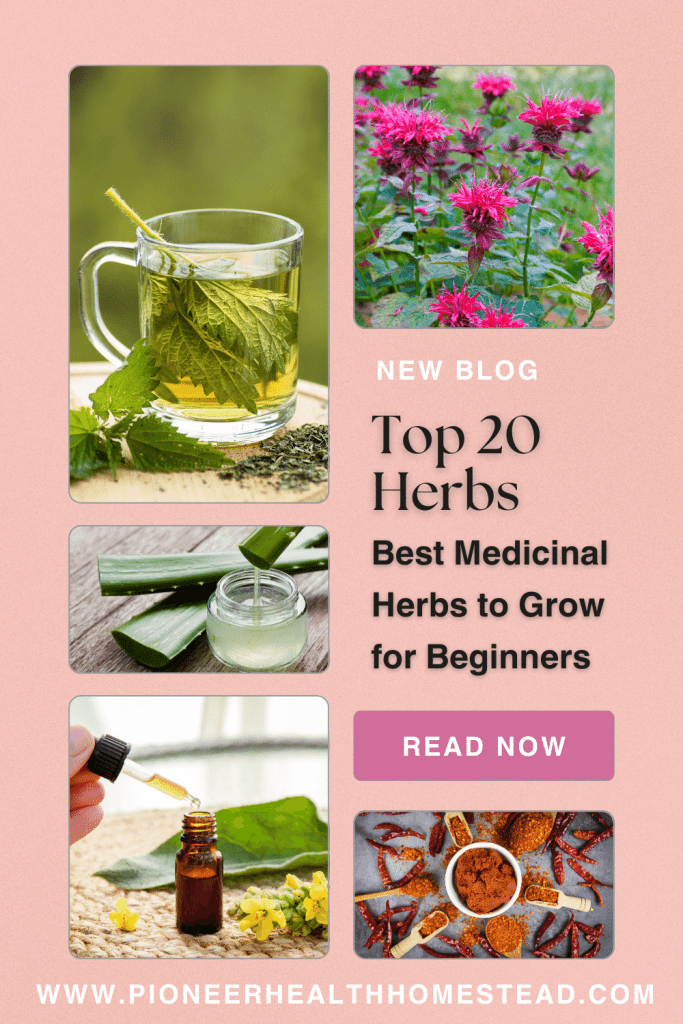
Labeling Your Herbs
Proper labeling is essential for keeping track of your herbs and ensuring that you’re using them safely and effectively. Label each jar or container with the name of the herb, the date it was harvested or purchased, and any other relevant information (such as the part of the plant used or any special instructions for use). This will help you keep track of your herbs and ensure that you’re using them safely and effectively.
Storing Your Herbs
When it comes to storing your herbs, there are a few key things to keep in mind. Choose glass jars or containers with tight-fitting lids to help preserve the freshness and potency of your herbs. Glass is non-reactive and won’t absorb or transfer any odors or flavors, making it an ideal choice for storing herbs. Fill the jars as full as possible to minimize air exposure, which can cause herbs to degrade and lose their effectiveness.
This can be an expensive option for storing herbs. If you cannot afford to buy all new glass jars in the beginning, that’s ok! Do what you can to get started and replace them with glass jars as you can.
The best way to store your herbs in a cool, dark place is to maintain their potency and flavor. Exposure to light, heat, and moisture can cause herbs to degrade and lose their effectiveness. A pantry or cupboard is an ideal location for storing herbs, as it’s typically cool and dark. Avoid storing herbs near the stove or other sources of heat, as this can cause them to lose their potency more quickly.
Consider using a carrier oil to make herbal-infused oils or salves. Carrier oils, such as olive oil or coconut oil, can help preserve the potency of your herbs and make them easier to use. Simply fill a jar with dried herbs and cover them with carrier oil, then let the mixture sit for a few weeks to infuse. You can then strain out the herbs and use the infused oil in a variety of ways, such as in massage oils, salves, or balms.
Essential Oils
In addition to herbs, essential oils can also be a valuable addition to your home herbal medicine cabinet. Essential oils are highly concentrated plant extracts that can be used for a variety of health and wellness purposes. Some common uses for essential oils include:
- Lavender essential oil is often used for relaxation and stress relief. It can also help with sleep and skin irritation.
- Peppermint essential oil is a popular choice for digestive issues, such as indigestion and bloating. It can also help with headaches and muscle aches.
- Eucalyptus essential oil is commonly used to relieve congestion and coughs. It can also help with sore throats and sinus infections.
- Tea tree essential oil is a powerful antimicrobial oil that can help fight infections and boost the immune system. It can also be used to treat skin conditions such as acne and eczema.
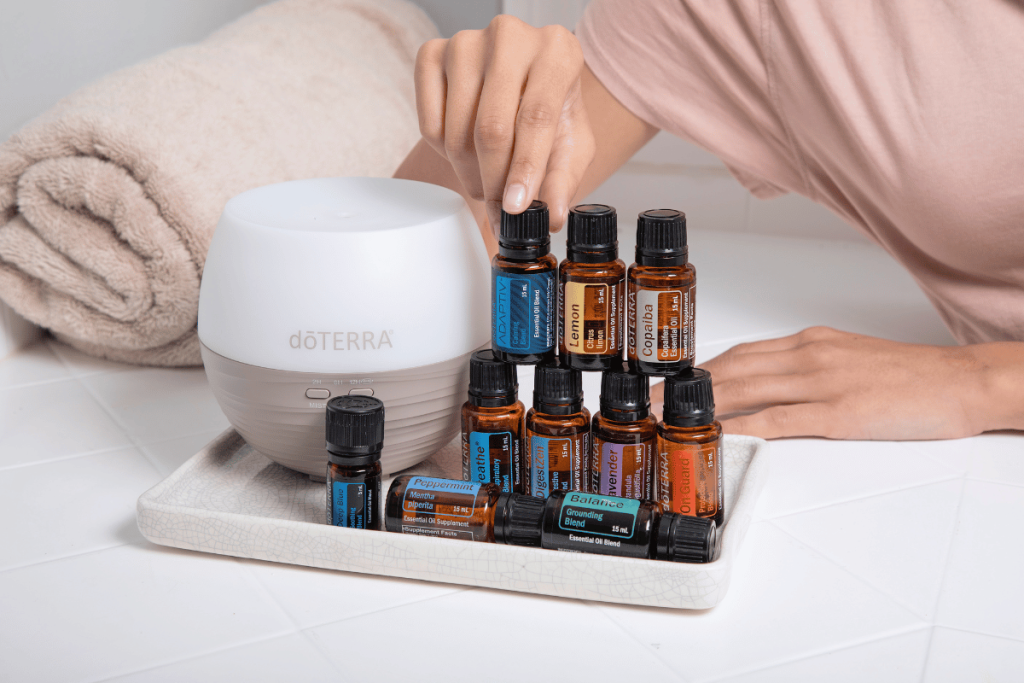
When using essential oils, it’s important to dilute them properly and use them safely. Essential oils are highly concentrated and can be irritating to the skin or mucous membranes if used undiluted. Always dilute essential oils in a carrier oil, such as olive oil or coconut oil, before applying them to the skin. Additionally, some essential oils can be toxic if ingested, so it’s important to keep them out of reach of children and pets.
By incorporating both herbs and essential oils into your home herbal medicine cabinet, you can create a comprehensive collection of natural remedies that will support your health and wellness naturally.
How to Best Use Essential Oils
Lavender Essential Oil:
- Relaxation and Stress Relief: Add a few drops of lavender essential oil to a diffuser or a bowl of hot water and inhale the steam. You can also add a few drops to a warm bath for a relaxing soak.
- Sleep: Place a few drops of lavender essential oil on a cotton ball and tuck it under your pillow or add a few drops to a diffuser in your bedroom.
- Skin Irritation: Mix a few drops of lavender essential oil with a carrier oil, such as coconut oil or olive oil, and apply it to the affected area.
Peppermint Essential Oil:
- Digestive Issues: Add a few drops of peppermint essential oil to a glass of water or a cup of herbal tea and drink it slowly. You can also massage a few drops of diluted peppermint oil onto your abdomen in a clockwise motion.
- Headaches: Mix a few drops of peppermint essential oil with a carrier oil and apply it to your temples and the back of your neck.
- Muscle Aches: Mix a few drops of peppermint essential oil with a carrier oil and massage it into sore muscles.
Eucalyptus Essential Oil:
- Congestion and Coughs: Add a few drops of eucalyptus essential oil to a bowl of hot water and inhale the steam. You can also add a few drops to a diffuser or a bowl of hot water and place it in your bedroom.
- Sore Throats: Mix a few drops of eucalyptus essential oil with a carrier oil and apply it to your throat and chest.
- Sinus Infections: Add a few drops of eucalyptus essential oil to a bowl of hot water and inhale the steam. You can also add a few drops to a diffuser or a bowl of hot water and place it in your bedroom.
Tea Tree Essential Oil:
- Infections: Mix a few drops of tea tree essential oil with a carrier oil and apply it to the affected area. You can also add a few drops to a warm bath.
- Immune System: Add a few drops of tea tree essential oil to a diffuser or a bowl of hot water and inhale the steam. You can also add a few drops to a diffuser in your bedroom.
- Skin Conditions: Mix a few drops of tea tree essential oil with carrier oil and apply it to the affected area.
Remember to always dilute essential oils in a carrier oil before applying them to the skin, and never ingest essential oils. If you have any concerns or questions about using essential oils, consult with a healthcare professional.
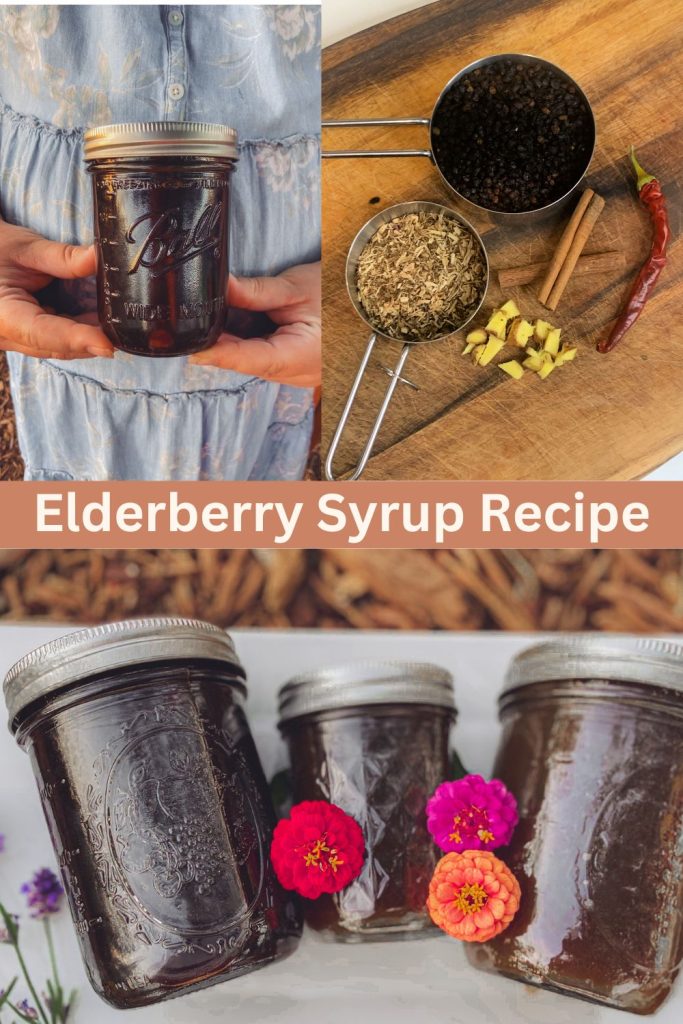
Herbal Remedies
Elderberry Syrup Recipe original post.
How to Make Elderberry Syrup
SOME OF THE TOOLS THAT YOU WILL NEED ARE:
- stock pot
- mesh strainer
- quart jar
- large stirring utensil
- large bowl or measuring cup
THE INGREDIENTS FOR THIS RECIPE ARE:
- dried elderberries
- dried echinacea
- dried rosehips
- dried cayenne pepper
- cinnamon stick
- fresh ginger
- raw honey
- water
Directions
Step 1
Add the water to your pot while on medium to low heat. Add in all of the herbs.
Allow to come to a simmer, not a boil. We want this low and slow.
Once the water level has evaporated at least 1 cup and the cinnamon sticks have opened up, you can turn off the heat and allow to cool some before straining if desired.
Step 2
Use a large bowl or measuring cup (as pictured here) with a mesh strainer over it to strain out the herbs and the syrup. Use your mixing tool to squeeze out as much liquid as possible. You don’t want to waste any of that liquid.
Using a large glass measuring cup like this one will allow you to see the amount of syrup you have to better adjust for your jar size and the amount of honey you may want to add.
Step 3
You can see how the cinnamon sticks have opened up here.
The large glass measuring cup allows me to see that I have 2 cups of syrup and that adding my 1 cup of honey to it, will fit well into the quart-sized jar that I have.
Step 4
Pour your honey into the jar while the elderberry syrup cools to around 100 degrees F. This is important so that you do not kill off the raw and therapeutic properties of the honey.
If you are going to be using processed honey, you do not need to wait for the syrup to cool.
Step 5
Once the elderberry syrup has cooled, you can pour it into your honey-prepared jar and stir to combine.
You can add more honey if desired for consistency or added sweetness.
Apply a leakproof lid. Once completely cool, store in the fridge for up to 6 months.
Directions for use:
- Adult: Take 15-30ml daily for prophylaxis. Take a 2-day break every few weeks. Take 15-30ml 3-5 times a day if sick until healthy then take a 2-day break.
- Children: Take 5-7.5ml daily for prophylaxis. Take a 2-day break every few weeks. Take 5-7.5ml 3-5 times a day if sick until healthy then take a 2-day break.
- *Not recommended for under 1 year of age due to raw honey.
Elderberry Syrup
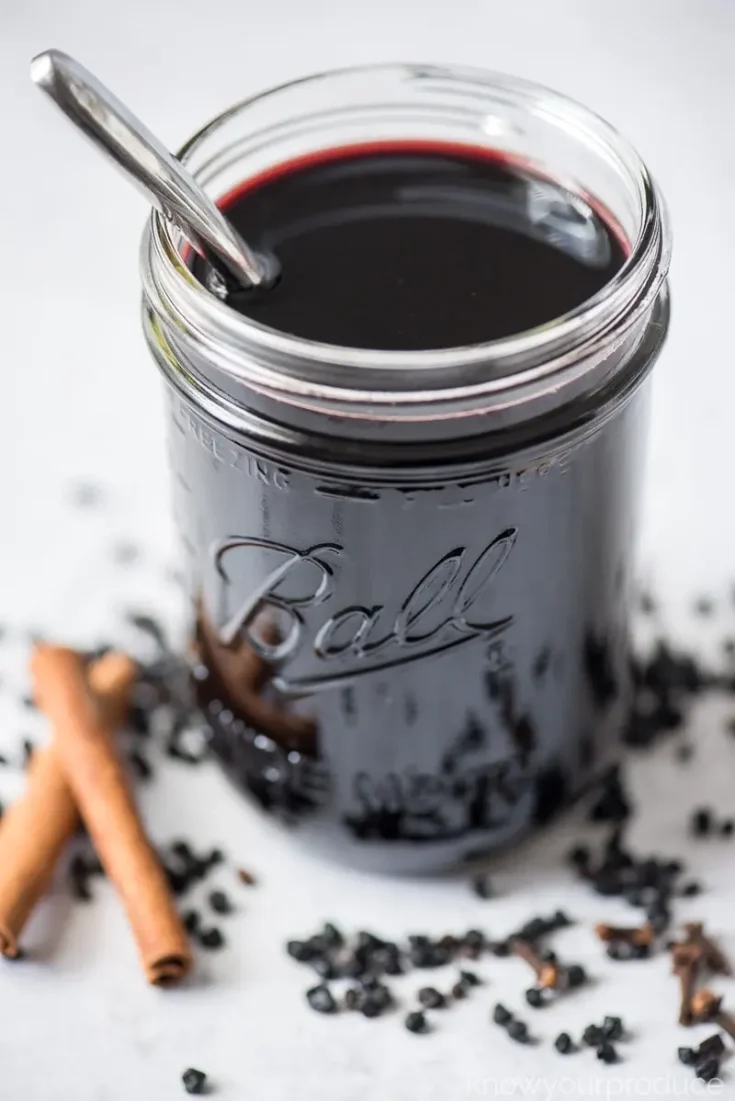
This is a quick and simple elderberry syrup recipe. You can add in or omit herbs as necessary. There is a video tutorial below with short step by step instructions.
Ingredients
- 5 cups water
- 1 cup dried elderberries Organic is always best when possible
- 1 tablespoon fresh ginger can substitute with dried
- 1/4 cup echinacea root
- 1/4 cup rosehips
- 2 sticks cinnamon
- 1 medium dried cayenne pepper Can crush before adding
- 1 cup raw honey Can add less or more to taste
Instructions
1. Pour water into the pot while on medium to low heat
2. Add in all of the herbs and do a quick stir.
3. Let the mixture come to a simmer. The syrup is done when the cinnamon sticks have opened and the water level has evaporated by at least 1 cup.
4. Strain mixture with a mesh strainer into a large enough measuring cup/bowl. While allowing the mixture to cool to approximately 100 ℉, add your honey into the quart jar. Once mixture is cooled, pour into the jar and stir.
5. Apply a leak proof lid. Once syrup is completely cool, store in fridge for up to 6 months.
Notes
Directions for use:
- Adult: Take 15-30ml daily for prophylaxis. Take a 2 day break every few weeks. Take 15-30ml 3-5 times a day if sick until healthy then take a 2 day break.
- Children: Take 5-7.5ml daily for prophylaxis. Take a 2 day break every few weeks. Take 5-7.5ml 3-5 times a day if sick until healthy then take a 2 day break.
- *Not recommended for under 1 years of age due to raw honey.
Safety and Precautions
Using herbs safely is crucial to ensure that you receive their intended benefits without experiencing any adverse effects. This is something to always keep in mind when utilizing your home herbal medicine cabinet. Here are some important considerations to keep in mind:
Dosage
Herbs can be potent, and the appropriate dosage can vary depending on factors such as age, weight, and overall health. It’s essential to follow recommended dosages provided by a qualified herbalist or healthcare professional. Starting with a lower dose and gradually increasing it can also help gauge your body’s response.
Interactions with Medications
Some herbs can interact with medications, either enhancing or diminishing their effects. For example, St. John’s Wort can reduce the effectiveness of birth control pills, and garlic can increase the risk of bleeding when taken with blood-thinning medications. Always consult with your healthcare provider before using herbs, especially if you’re taking prescription medications.
Consult a Healthcare Professional
If you have a pre-existing medical condition or are pregnant or breastfeeding, it’s crucial to consult with a healthcare professional before using herbs. They can provide personalized advice based on your individual health needs and help you navigate potential risks and benefits.
Allergic Reactions
Some individuals may be allergic to certain herbs. It’s essential to start with a small dose and monitor for any adverse reactions, such as itching, rash, or difficulty breathing. If you experience any allergic symptoms, discontinue use immediately and seek medical attention if necessary.
Quality and Source
Ensure that you’re using high-quality herbs from reputable sources. Organic and sustainably sourced herbs are generally preferred, as they are less likely to contain pesticides or other contaminants. Sometimes the best price on herbs is not the best quality. See my resource page for where I source my herbs. Additionally, be cautious when foraging for wild herbs, as misidentification can lead to harmful consequences.
Storage
Properly storing herbs is crucial to maintain their potency and safety. Store herbs in a cool, dark place away from moisture and direct sunlight. Use airtight containers to prevent contamination and label them clearly with the herb’s name and date of purchase or harvest.
Pregnancy and Breastfeeding
Some herbs are contraindicated during pregnancy and breastfeeding due to their potential effects on the developing fetus or infant. It’s essential to consult with a healthcare professional before using herbs during these periods.
Children and Elderly
Dosages for children and the elderly may differ from those for adults. Always consult with a healthcare professional before giving herbs to children or the elderly, as their bodies may respond differently to certain herbs.
The Take Away
Building a home herbal medicine cabinet can be a rewarding and empowering experience. By incorporating a variety of herbs and essential oils into your cabinet, you can create a comprehensive collection of natural remedies that will support your health and wellness naturally.
Throughout this blog post, I’ve discussed the benefits of herbal medicine, including its natural ingredients, fewer side effects, and cost-effectiveness. I’ve also explored how to select and store herbs, as well as how to use essential oils for common health concerns.
I’ve also provided a step-by-step guide on how to prepare your cabinet or storage area for your herbs, including cleaning and organizing the space, labeling and storing your herbs, and using carrier oils to make herbal-infused oils or salves.
Finally, I’ve discussed the importance of using herbs safely, including dosage, potential interactions with medications, and consulting with a healthcare professional. I’ve also provided tips on how to avoid allergic reactions and other potential risks.
I encourage you to start building your own herbal medicine cabinet and share your experiences in the comments. Whether you’re new to the world of herbal medicine or looking to expand your knowledge, I hope this blog post serves as a source of inspiration and guidance as you begin your journey of creating your very own herbal medicine cabinet.
While I am a registered nurse (RN, BSN), I am not a medical doctor. Please take this education and speak with your healthcare provider before taking these herbs.
As an Amazon Associate, I earn from qualifying purchases. This post contains affiliate links, which means I make a small commission at no extra cost to you. You can view our privacy policy here.
